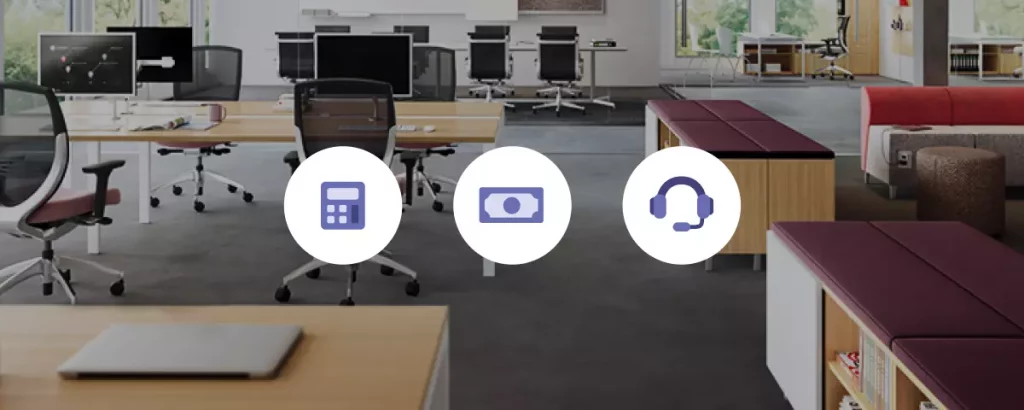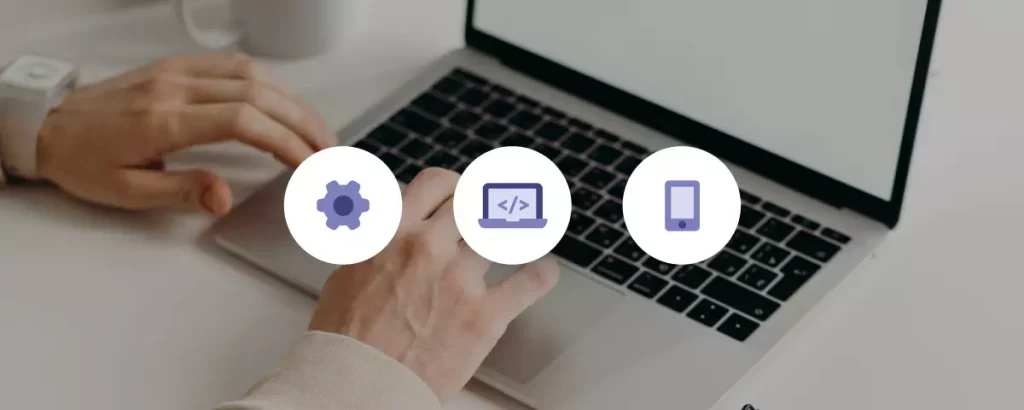
Starting a coworking space is an exciting adventure.
With the coworking industry set to grow 30% by the year 2030, there’s a reason why we’re seeing more and more aspiring coworking owners and operators embarking on this journey
There is a lot to figure out when starting a coworking space, from where to open your first location to how to differentiate yourself in the market.
If you’re considering opening a coworking business in your community, this is the guide for you. We’ll help you figure out the foundation of starting your coworking business, so you’ll be set up to succeed in the flex industry and beyond.
Determine your business strategy

1. Figure out your why
The first question to ask yourself before starting a coworking space is why.
Why do you want to start this business? What motivated you to choose coworking? Your reason for starting a coworking business will guide many of the future decisions that you make. Maybe you want to:
- Build a community of mission-driven people
- Make use of a pre-existing, underutilized space
- Create a place for cryptocurrency startups to network and get support
- Capitalize on the the hybrid work trend
Kia Rahmani, Optix founder and CEO, started a coworking space after spending time in incubators in Silicon Valley. He wanted to create a collaborative space for start-ups in his hometown of Vancouver, much like he experienced in the states.
Identify your why before making any business decisions with starting your space.
2. Determine if your space is for community or for profit (or both)
An important part of identifying your why is deciding if your space is going to be for profit, for the community, or both. Here is what we mean.
Jen wants to open a women’s only coworking space in her small rural community. She gets a group of women together who all pitch in to fund the space. They get furniture by donation, have discounted membership options for young female professionals, and organize free events for females in the community.
Tom wants to open a coworking space. He sees the move towards hybrid work as an opportunity to open a space for remote corporate workers in tech. He receives funding from investors to open a state-of-the-art coworking space in the heart of New York City. He plans to grow it to multiple locations across the country.
Jen and Tom have very different reasons for opening a coworking space. Therefore, the way they approach business decisions will be very different.
Of course it is possible to have a community-driven space that is for profit. However, deciding which is your primary driver from the get-go will give you clarity on resource offerings, membership plans, funding, and so much more.
3. Create a business plan
Creating a coworking business plan is a good idea, if not a necessity, to starting a coworking business.
A plan will help you:
- Get a loan or receive funding
- Guide your short-term and long-term strategy
- Help you make important business decisions
A business plan is a great opportunity to organize your thoughts. It will help you figure out how you’re going to make money, who you’re targeting, who your competitors are, and other important aspects of running a successful business.
If you’re looking for funding or applying for a small business loan, you will need to create a coworking business plan. You will want to spend some time putting your plan together before even looking for a space to lease.
4. Determine your business model
Determining your coworking business model will help you ensure you have a viable business before investing any money into it.
The primary way coworking spaces make money is by selling space. This is in the form of:
- Hot desks
- Dedicated desks
- Meeting and conference room rentals
- Private offices
However, there are a few other coworking revenue models to consider including:
- Additional amenities like gym and childcare facilities
- Workshops and paid events for members
- Virtual office services
- Renting the space for external programs and events after hours
- Renting resources like TVs, podcasting equipment, and additional hardware
- Food and drink outside of complimentary tea and coffee
You don’t need to figure all of your revenue streams out right away. However, you should know what the breakdown of your space will be in terms of space offerings, as well as if you will require any space for additional amenities.
This revenue forecast tool from Coworking Resources can help you figure out how much space you need to sell and at what price in order to be profitable.
5. Pick the right location
Refining your coworking location strategy is a huge first step in opening your flex space.
A location strategy can consist of:
- The city you want to open in
- The type of building you’re looking for
- The size of the space you want
- The price range you’re willing to pay
- The demographic you’re looking to target
All of these factors will influence where you decide to open your physical space. The key to picking the right location is doing lots of research. Select the top cities you want to open in and research everything from demographics to job growth.
Make sure that the city and space you’re choosing to open in is aligned with what your target customers want, as well as the kind of community you’re looking to build.
Sort out your finances and operations

1. Figure out how you will fund your coworking space
The cost of starting a coworking space will depend on where you’re located, how big your space is, and the current real estate market. Some have opened coworking spaces for as low as $20,000 while others can easily cost hundreds of thousands of dollars.
Once you figure out the cost of opening your space, you’ll need to think about how you’re going to fund it. There are three main sources of funding:
- Self-funding: investing your own personal money into your business
- Investors: venture capital from investors. It will usually require you to give up a share of the company (equity) in return for an agreed upon sum of money
- Loans: borrowing money and paying back interest. There are many different loans available including a small business loan or a loan from a bank
Each form of funding comes with its own pros and cons. Most people mix multiple sources of funding to start their coworking space.
This table breaks down the pros and cons of each way of funding a coworking space.
| Self-funding | Gives you complete control of your business including all decisions you make. | Can be risky if your business fails. Many people do not have the capital to fund their space up front. |
| Investors | Oftentimes gives you access to a partner with business experience. Offers a large amount of money that you couldn’t get otherwise. |
Requires you to give up shares in your business. You will need to consult your investors before any major business decision is made. |
| Loans | Gives you access to funding without giving up shares in your company. | Interest payments can be very high. May be hard to secure a loan from a bank depending on your financial situation. |
Think carefully about how you want to fund your business before starting as this will affect every other aspect of your business.
2. Align on your initial membership plans and pricing
Structuring and pricing your coworking membership plans is one of the most important things you will do when gearing up to launching your coworking business.
Spend some time thinking about the kinds of membership plans you will offer, as well as how you want to price them.
These are some of the most popular plans we see. All membership plans include full access to the community (events, communication, etc.) as well as:
- Community plan: 8 hours of hot desking a month
- Hot desk plan: 8-20 days a month of hot desk use, 5-10 hours of meeting room rentals a month
- Dedicated desk plan: their own desk on a part or full-time basis, 5-10 hours of meeting room rentals a month
- Private office: 24/7 access to their own secure office, meeting room rental allocation
- Virtual office plan: access to virtual office services and discounts on meeting rooms and desk bookings
- Weekender plan: Unlimited weekend access to hot desks
How you price these plans will depend on the market, your competitors, the amenities you offer, and more. A good place to start is by figuring out what the going rate is for similar membership plans in your area. This ensures you remain competitive in the market.
3. Consider forming an LLC for your business
An LLC is a limited liability company. When starting a coworking business, you may choose to register your business as an LLC.
This has two main advantages:
- It protects you and your personal assets in the case of bankruptcy or legal troubles
- It simplifies filing taxes
If your coworking space were to be sued, then forming your business as an LLC would prevent you from being personally liable.
Here is a helpful write-up on LLCs from Investopedia for more information on the pros and cons of limited liability companies.
4. Build out your coworking staff
Depending on the size and scale of your operations, you may need to hire staff for your coworking space.
The most common position that coworking operators hire for is a community manager. A community manager is responsible for engaging the community, managing bookings, and ultimately making people feel welcome and safe.
You may get away with being able to do everything on your own in the beginning. However, you will almost certainly need to hire a community manager as your community grows.
Here are some other positions you may consider hiring for your space:
- Sales or business development role
- Cleaning staff
- Freelance developer to build and manager your website
- Finance officer or bookkeeper
- Virtual assistant
A community manager will cost you around $20-$25 /hour. If you do decide to hire a manager for your new space, be sure to factor that cost into your budget.
5. Draft your coworking KPIs you’ll be tracking
Key performance indicators or KPIs will help you develop a way to measure your success over time and keep you on track to reach your goals.
Which KPIs you choose to track will depend on what is most important to reaching your business goals.
Seven KPIs that we recommend everybody track are:
- Tours completed: How many tours did you complete this month?
- New member sign ups: How many of these tours converted to member sign ups?
- Member retention rate or member churn: How well are you retaining members?
- Average Revenue per member: How much revenue are you driving on average per member?
- Member satisfaction rate: How happy are your current members?
- Customer acquisition cost: How much does it cost to acquire a new member?
It’s important to think about how you will measure the success of your coworking space before you open. Set up a system to track these metrics so you know how you’re tracking over time.
Develop a sales and marketing strategy

1. Define your target market
Defining your target market, or ideal customer profile is a fundamental part of starting a business. Here are some guiding questions to help you figure out your target market:
- What is their demographic (age, gender, occupation, income)
- What do they care about
- What problems do they have
- Why do they want a coworking space
It can be helpful to draw this person out or create a battlecard to help you remember who they are. This buyer persona tool from HubSpot can help bring your ICP to life so you always keep them fresh in your mind.
Members are the heart and soul of your coworking space. Be clear about the kind of person you want to attract, and make your business decisions with them in mind.
2. Create an initial member acquisition strategy
Getting your first coworking members is an exciting challenge. There are many different ways you can attract people to your space. One of the most effective strategies we see in the beginning is promotional pricing.
This is where you price your membership plans at a significantly cheaper rate for a set period of time in hopes of attracting new members. Then, you promote this discounted price using:
- Digital ads
- Social media
- Street teams
- In-person events
- Local business partnerships
The goal of this acquisition campaign is to generate buzz and bring people into the space, in hopes of building a lively community.
You are not likely to be profitable with this strategy. However, you can use it as a temporary tool to get people in the door and prove the value of the space itself.
This article will walk you through how to get clients for your new coworking space, fast.
3. Map out a long-term marketing plan
How you acquire members short-term will look different than how you acquire members long-term.
While offering a steep discount is a good way to get people in the door in the beginning, it isn’t a sustainable way to acquire customers.
Having a solid marketing plan for your coworking space is essential to long-term growth.
A good marketing plan will include:
- Market research
- Target market
- Goals and objectives
- Strategy
- Marketing tactics
- Budget
Think about how many members you want to acquire in the next year. Now think about how you are going to get them. You could:
- Build a social media presence
- Run digital ads on Facebook or Google
- Create blog content using SEO
- Attend in-person events to network with potential clients
- Build partnerships with local businesses
Here is an example of what a content-driven marketing plan may look like for a coworking space:
| Target market | Millennial remote workers |
| Goals and objectives | To increase awareness of our coworking space To acquire 10 new customers a month for 3 months |
| Strategy | To create content that educates young remote workers on the benefits of a coworking space |
| Tactics | Create short-form videos for TikTok and Instagram Create long-form videos for YouTube Run these videos as ads on the platforms |
| Budget | $500/mo |
It’s important to consider how you will get customers and whether you will need a budget for acquiring those customers. This will need to be factored into your cost of opening your space.
4. Outline exactly out how you will differentiate yourself
Creating a differentiated offering for your space can help you combat the competition and keep your membership growing long-term – even when bigger chains are marching into your market.
Creating a coworking niche is one way to differentiate yourself from your competitors.
However, there are other ways to create value for your members and stand out in the crowd including:
- Hosting community events
- Negotiate discounts with local businesses
- Providing child care or other unique add-ons
- Allowing pets in the space
- Offering 24-hour access
Consider what will make your space different from your competitors, and what will make people choose your space over others. See if you can leverage these insights to create a desirable space.
5. Create a sales strategy
Sales and marketing go hand-in-hand. Here are some questions to ask yourself when building out an effective sales process at your coworking space:
- How will you capture leads
- What will you do with leads once they come through
- How will you ensure you’re following up with your leads
- Who will manage your customer relations
- How will you incentivize deals to close
Consider implementing a CRM system in your coworking space to help manage your sales and marketing processes.
This will keep all of your leads organized and ensure they’re well supported throughout the sales process. If you do choose to use a CRM, it’s easiest to set this up in the beginning.
We wrote a complete guide to everything you need to know to market a coworking space. Check it out for some helpful coworking marketing ideas to get started!
Create an exceptional member experience and begin to build community

1. Determine what kind of community you want to build
The number one reason why people seek out coworking spaces is for community. Having a strong community element in your coworking space will help you attract and retain members. It can be the difference between a business and brand.
First, spend some time thinking about what a coworking community means to you. For some, building a coworking community means bringing people together to network and make new connections. For others, it means providing a safe space to express themselves.
Then, you can start thinking about the kind of community you want to build.
- Do you want to build a space for college students to develop their professional skills?
- What about a space for young ecommerce companies that need co-warehousing facilities?
- Perhaps you want an incubator space for entrepreneurs to network and learn from one another?
Be intentional about the kind of community you want to build, and what it means to build a community around a space.
This will help guide all of your community engaging efforts as you open your new coworking space.
2. Begin building your community before you open your doors
One of the best things you can do before you open your space is build a community.
Find people who want to be around each other. Meet others in the community with shared values and interests. Then create the space where they can come together.
The chances of you succeeding long-term are much higher if you start with the people first.
You can do this through:
- Building a personal brand or social media account online and using it as an opportunity to begin creating a community around shared goals or interests
- Getting involved with local communities in your city and gauging the desire and need for something like a coworking space
How can you start a coworking space without people? Put the people before the space and you’re likely to benefit from it long-term.
3. Develop strategies to engage your community
Engaging your community is one of the most challenging problems for coworking operators.
At the end of the day, building an engaged community comes down to understanding the people in your space and going above and beyond to serve them.
Here are some of the things we’ve seen to engage your coworking community:
- Organize monthly in-person events with complimentary food and drinks
- Send out a weekly newsletter sharing community news
- Set up a community feed in your space for members to connect
- Celebrate member birthdays, space anniversaries, and other significant days
- Set up webinars and virtual lunch-and-learns for members
Some of these things will require budget and planning before you open your doors. Therefore, it’s best to consider community engagement early in the business process.
4. Think about how to deliver an exceptional user experience
Coworking operators are in the hospitality business. At the end of the day, it’s all about how you create an unforgettable experience for your members. There are many ways that you can go about doing this:
- Complimentary, locally roasted coffee and organic tea
- A branded, white-labeled app that streamlines the member experience
- Ergonomic office chairs and plush couches
- Office supplies available
Think about how you want to be treated at a hotel or service experience and give that to your members.
Then, build these amenities into your start-up costs so you have the budget to go above and beyond for your members.
5. Be intentional with the look and feel of your space
Part of providing an amazing member experience is creating a space that inspires.
Do you want a high ceiling office space downtown? Do you want a cozy 2-story house converted into a coworking space?
What space you get and how you choose to decorate it will depend on the vibe you want to create. We often see large spaces with lots of natural light and plants lend themselves to the most inspiring spaces.
However, there are lots of unique, quirky ways you can decorate your space and make it your own.
Here are some of our clients and their well designed coworking spaces for inspiration:
Don’t forget about the importance of creating a beautiful space for people to work in.
Get the right technology in place

1. Plan out your coworking technology ecosystem
Technology is a huge part of the modern coworking space. You need technology to operate an efficient space, period.
Knowing where to start can be daunting, especially with all of the tools and choices out there. This is how we suggest beginning to build your coworking technology ecosystem:
- Start light: build the foundation of your stack with only the tools that you need and increase complexity as you grow
- Go high reward first: start with tools that will support the most time-intensive tasks, like managing bookings and invoicing
- Integrations are key: look for tools that work well together and integrate as much as you can
- Think about the future: go for tools that will be able to scale and evolve with you and your business
The most important thing to consider when you’re opening your first space is what are the essential tools I need to run my business. Start with the essentials and expand as you grow.
2. Select your coworking management software
Part of an effective technology ecosystem is a great coworking management software.
Coworking platforms like Optix helps automate all of the day-to-day operations of running your business, effectively helping you manage, measure, and grow your business.
While you can implement a coworking management software in your space at any time, it’s easiest to get it up and running in your space in the very beginning,
These are a few questions to ask yourself before getting started:
- What are my coworking space’s biggest operational challenges?
- What will best support my members?
- What other tools will I be using and will they integrate with my software?
- What kind of support will I be provided with long-term?
Wondering how software can help you start a coworking business? Reach out to a member of the Optix team today to get started.
3. Align on the tools you’ll launch with
There are many other tools that you can use to help automate the operations in your space.
Again, we recommend starting with the basics when you begin. This includes things like:
- Accounting software (Xero, Quickbooks)
- Payment gateway (Stripe, Paypal)
- Member management software (Optix)
- Door access control (Kisi)
Then, you can begin to add more tools and complexity as your space grows including:
- WiFi management (IronWiFi)
- Print management (ezeep)
- Electronic document signing (Adobe Sign, Docusign)
- Conference room technology (Zoom, Google Jamboard)
- Business Phone Platform (Nextiva, RingCentral, Ooma)
Map out the tools you plan to get before you open your space, and then within the first 6-12 months. That way, you can predict what tools you’ll need, when you’ll need them, and how they will work together and integrate with each other.
Ready to start a coworking space?
Starting a coworking space is exciting and challenging. Set yourself up for long-term success by thinking through everything you need before opening.
Develop a business strategy, get the right financial system in place, be intentional with your sales and marketing plan, create an exceptional member experience, and establish the right technology stack to achieve success in starting your coworking space.
Looking to open a new coworking space for your first time? See how Optix can help.



